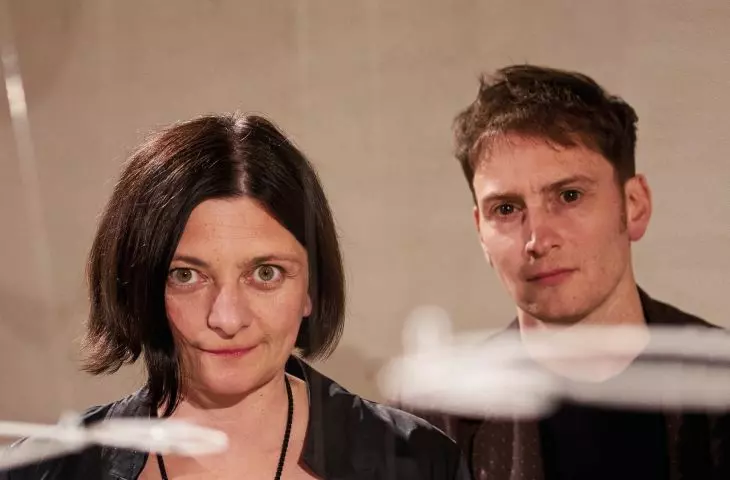The end of December — because that's when we finished preparing the January issue — is the best time for all kinds of summaries. And like every year, we ask practitioners and architecture critics to write what they consider a success and what they consider a failure in a given year. We do it in the convention of Kits and Hits. We give our Authors total freedom of expression and do not moderate this discussion. Rather, we are very curious about it.
Previous episodes of the series featured:
- Oskar Grąbczewski - architect, OvO Grąbczewscy Architekci studio
- Filip Springer - reporter and photographer
- Hubert Wąsek - president of SARP Częstochowa Branch
- Maciej Franta - architect, founder of Franta Group Architects studio
- Marta Sekulska-Wronska - architect and partner at WXCA studio, president of OW SARP
- Tomasz Malkowski - architecture critic, author of articles and television scripts on architecture
Malgorzata Kuciewicz, Simone De Iacobis in Sink or Soar 2022 from A&B 01|2023
The hit is already here — the beginning of an aesthetic turnaround. We are moving away from beauty understood as sprucing up, sprucing up, sterility and sterility, because we want cities more saturated with nature, less devastating to other species. Spontaneous greenery, left fallen leaves in the park, decayed trunks of fallen trunks, composts are already looked upon favorably. The need for wetter and darker enclaves for animal respite and the value of mulch to enable hibernacula is understood. Scrub and bushes in place of shrubs are accepted, and „weeds” are appreciated. The swamp or marsh is already present in the urban debate, soaking areas are beginning to appear in new projects. We are taming the fact that nature is not always elegant, that plants have the right to look lousy, that they have phases of dormancy, dying and rebirth. We talk about the infrastructure of decomposition, places for „dirty” natural processes, intended for the formation of native soil. The first ones are already there, such as Poznan's humus, i.e. logs left in parks for natural decomposition (thanks, Kuba Glaz, for the May report). We are striving for leaf-forming soils, and have exposed a shoe pit in a Warsaw square for aerobic and decaying decomposition. The disgusted audience respectfully peeped at the beauty in ugliness, the transience, the power of organisms decomposing matter. One wonders, then, to what extent the indulgence regarding green spaces would succeed in extending to buildings. We admire historic walls that deliberately patinate: stonework rusticated so that sediment adds to its optical heaviness, or Carlo Scarpa's details that evoke intentional streaks. We are invariably inspired by the paintings of Bernard Bellott. At the exhibition at Warsaw's Royal Castle, you can admire how faithfully he depicted the undermined facades of buildings. It was his way of showing the power of passing time. Modern finishing materials are characterized by their „lasting novelty,” and this, after all, indicates their artificiality and high processing of raw materials. Can facades also be incorporated into the circulation of the world's transforming matter? The aesthetic turn makes it possible to revise the notion that a building is perfect when it is new, and that the aging of an object is merely a process of deterioration, a degradation that requires repair. It's time for walls that, like traditional building blocks, by their naturalness, will decompose so that a natural succession is set in motion over time. It's time for textures that acquire roughness, cracking, opening up to accumulate detritus. Materials that host lichen blooms, bryophyte growths, algal infestations. It's time for planes acquiring value through the ornamentality of natural processes, more readily populated by fauna and overgrown with dens.
[*]
Zachary Yusubov captivated us already at the first student exercises with his sensitivity. The task was to go out into the field and observe the element of water — the power of erosion, waterlogging, gouging, the power of rain ablation. He presented us with a photograph of the lumps that were formed after the accidental wetting of bags of gypsum, their fascinating sculptural shapes and the interesting texture of the packing imprint. He focused attention on the causality of water, rather than its power of destruction. Zachary showed us many more times his extraordinary talent, obvious from the entrance exams — he was the only one in the school's history to score a hundred out of a hundred. He died in the spring, serving in the Territorial Defense, he was twenty-one years old. Russia is a terrorist state. Kharkiv School of Architecture can be supported through the website — see here.
Malgorzata Kuciewicz, Simone De Iacobis
Centrala Design Group














